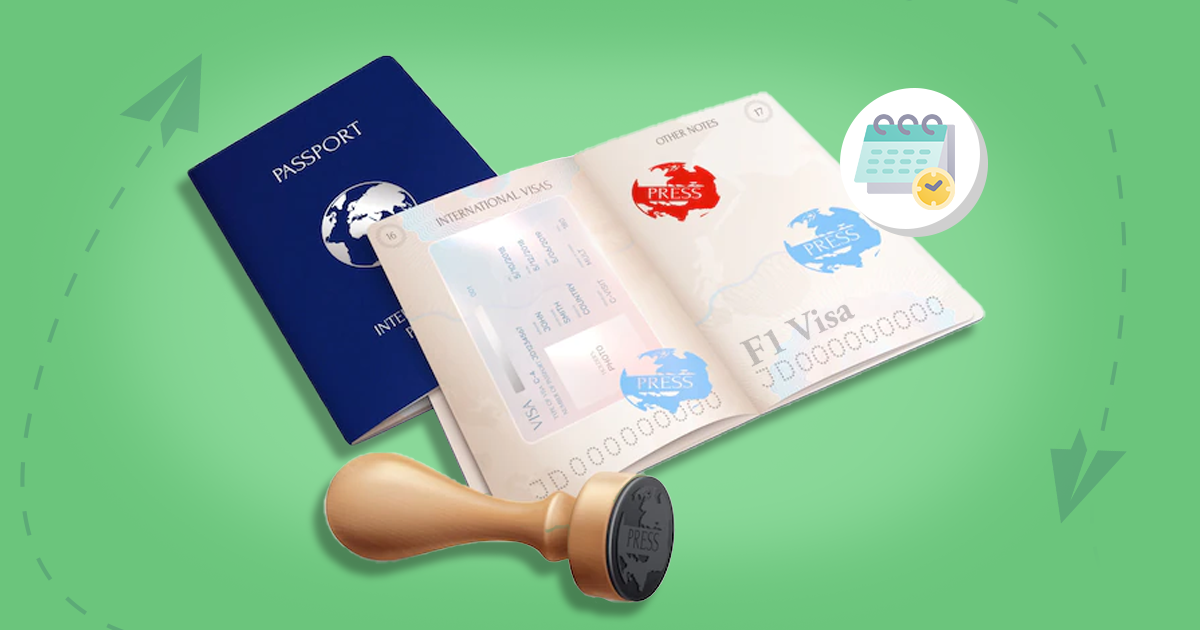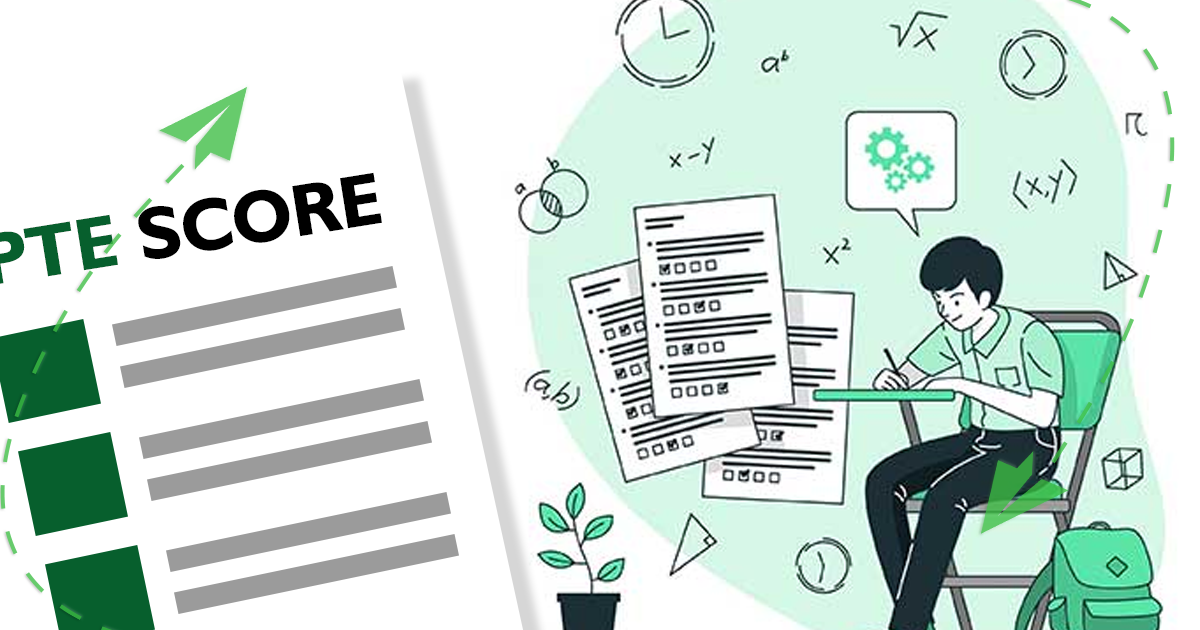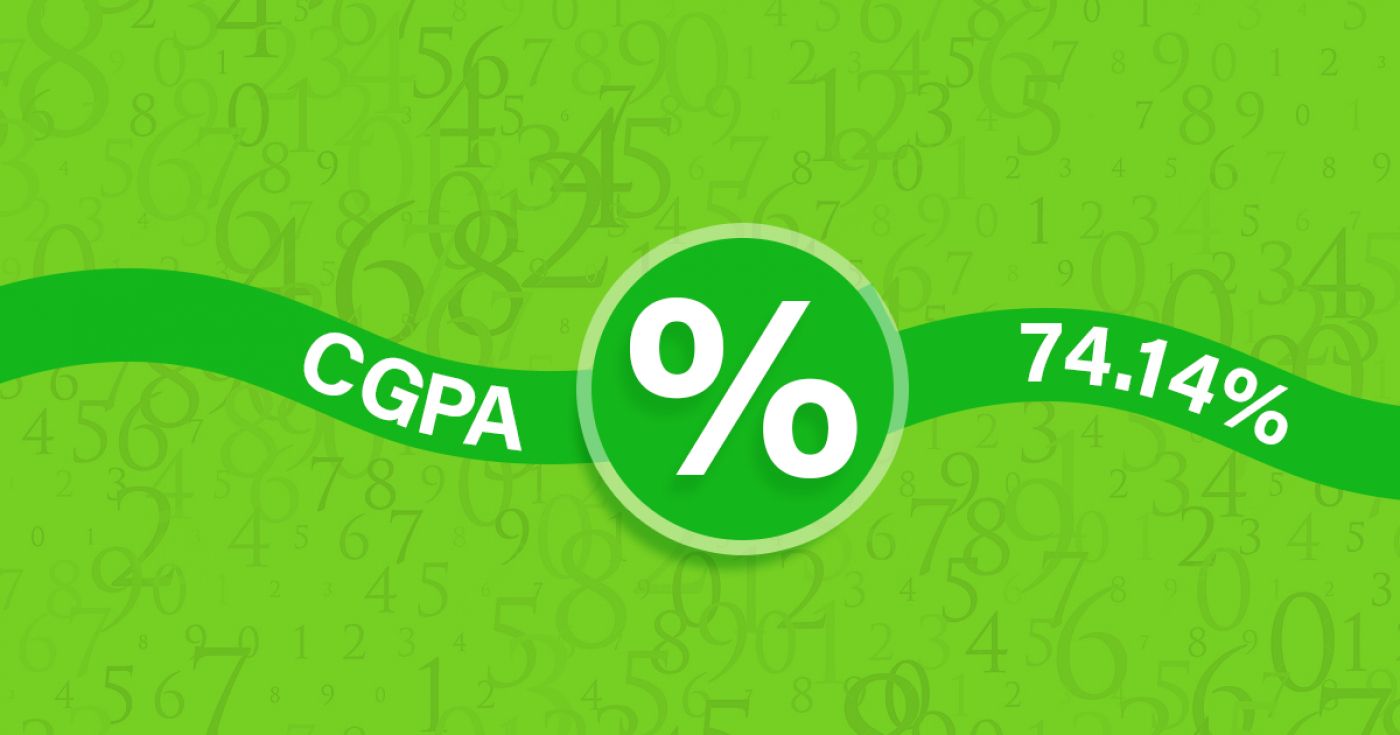Master of Science in Electrical Engineering (STEM)
at Enrollment Advisory Group - University of Bridgeport USA
Overview
A Master of Science Degree in Electrical Engineering (MSEE) will provide the student with the knowledge and skills needed to pursue many new and different careers in modern society, including careers that have yet to be invented.
Electronics Design and Nanotechnology
The EE department has an electronics design program that is state-of-the-art, with emphasis on very large scale integrated circuits design (VLSI) on a microscopic scale and with a new emphasis of VLSI design on a nanometer-scale as well. A series of VLSI courses (i) design (Analog and Digital VLSI, radio frequency VLSI, low power VLSI), (ii) fabrication (microelectronic fabrication and nanotechnology), and (iii) testing (VLSI testing) are available. A closely related field is mirco- and nano-technology MEMS (microelectromechanical systems). Micro-MEMS designs systems of electronics and motion the size of microns. The smaller nano-MEMS builds systems the size of individual molecules. Nano-MEMS is used to create the next generation of VLSI components, including single-electron-transistors, nano-wires, and quantum computers.
Our department has a strong concentration in signal analysis, including the analysis of human speech vs. noise and the transmission of signals via satellite or cable or cell tower.
The EE department has a large PLC lab. Programmable Logic Control consists of 2 parts. You build an assembly line to move products and to do things to these products; for example, a robot arm will sort products or load them on to a platform. To control this assembly line, you need to implement the necessary computer code.
Students in the M.S. Electrical Engineering Program will be able to:
- Demonstrate the ability to use techniques, skills and modern engineering tools necessary for engineering practice
- Demonstrate the ability to plan and conduct laboratory experiments and interpret and report results
- Demonstrate the ability to identify and apply concepts of engineering economics and project planning
- Demonstrate knowledge of contemporary global and societal issues and their relationship and exercise strong oral and written communication skills including those needed for technical writing
30
Application Processing Days
Under Graduate
Program Level
Fact & Figures
Full Time On Campus
Study Mode
24
Duration
Enrollment Advisory Group - University of Bridgeport
Location
Master of Science in Electrical Engineering (STEM) Assistant Fee
$15660
Tuition Fee
$0
Average Cost of Living
$0
Application Fee
Master of Science in Electrical Engineering (STEM) Admissions Requirements
- Minimum Level of Education Required: To be accepted into this program, applicants must have a Bachelor's Degree.

Get superfast admissions at top Master of Science in Electrical Engineering (STEM) institutes in 2024
Benefits of choosing
➤Admission’s guaranteed at Top institutes across the world.
➤Enjoy exclusive application fee waiver’s with Edmissions.
➤Unlimited FREE Counselling sessions with Edmission’s
Experts
➤Get Tips from industry veterans to crack the IELTS exam in 1
week.
➤Assistance with scholarships, loans, forex, student accommodation and visa guidance.
Work Permit USA
Optional Practical Training or OPT is a period during which students, who have completed their degrees in the USA, are permitted to work for one year on a student visa by the United States Citizenship and Immigration Services (USCIS). OPT allows students to work for up to 3 years and develop real-world skills to survive in the competitive jobs market.
It is temporary employment for a period of 12-months that is directly related to the major area of study of an F-1 student. Eligible students have the option to apply for OPT employment authorization before completing their academic studies and/or after completing their academic studies.
A student can participate in three types of Optional Practical Training (OPT):
- Pre-Completion OPT: This is temporary employment provided to F-1 students before completion of their course of study.
- Post-Completion OPT: This is temporary employment available to F-1 students after completing their course of study.
- 24 Month STEM Extension: Students enrolled in STEM (Science, Technology, Engineering, and Mathematics) courses can a 24-month extension after their initial Post-Completion OPT authorization.
Detailed Program and Facts
30
Application Processing Days
Full Time On Campus
Program Intensity
Under Graduate
Program Level
24
Duration
Study Visa
English Test Requirement
Other Courses by Enrollment Advisory Group - University of Bridgeport,USA
Natural Sciences & Mathematics
Bachelor of Science in Mathematics
The UB four-year, Bachelor of Science, BS in Interior Design Degree Program prepares graduates with the required experience for the N.C.I.D.Q. examination and state registration. In the course of their studies, Interior Design students learn about gathering design information and problem-solving in a range of actual projects, from residential to commercial design.
Students further develop technical skills for expressing design solutions, using traditional sketching methods,computer aided design (Auto CAD) and 3D simulation computer programs.
Residential, hospitality, corporate offices, retail spaces and health care: all part of the SASD Interior Design Program. Most of these projects are done in collaboration with outside design firms, which gives an added real-life experience to the students and allows them to make professional connections. SASD is an accredited member of the National Association of Schools of Art and Design (NASAD),the governing body of undergraduate and graduate art and design schools.
Learning Outcomes and Careers
- Demonstrate ability to identify, analyze, conceptualize and solve interior design problems. Assessment: Studio portfolio projects appropriately respond to project criteria, and have clear, focused, expressive and communicative solutions to the stated problems. Apply learned design principles to solve the problem. Communicate solutions through 2D and 3D drawings, color theory and proper specifications of materials
- Demonstrate mastery of design techniques and concepts in interior design. Assessment: Projects within portfolios that show evidence of attention to detail, adherence to project-initial concepts throughout the process, and close attention that the initially presented concept matches the outcome. Projects show appropriate selection and implementation of materials, finishes, furniture, and fabrics
- Demonstrate an understanding of aesthetics and scale related to interior space, and of the history and current state of design in the world. Assessment: Projects, papers and presentations for art and history course work. In studio courses, projects that appropriately reference historical precedents and stylistic movements in interior design, bringing forward current thoughts in interior design with reference to the past. Through portfolio projects show working knowledge of scale though appropriate furniture and lighting specifications
- Demonstrate proficiency in selection and use of relevant technologies in design and in using available technologies to produce a design presentation. Assessment: Drawings, including floor plans, elevations, sections, rendered perspectives, and models made with the appropriate technology or software for the final presentation
- Demonstrate an understanding of the cultural and societal connections linking interior design trends and processes as well as a knowledge of business practices and of the market place. Assessment: Project solutions that are culturally and audience appropriate for the problem as posed by the criteria for the project. Awareness of the current marketplace based on materials and mechanicals specified for studio projects, projects for Business practices course work
- Demonstrate proficiency in presenting their own work as well as discussing and constructively critiquing the work of others. Assessment: Presenting ones work with confidence and a working knowledge of the criteria and materials presented, active participant in class critiques; clear, thoughtful and honest ability to give, accept and incorporate feedback
48 month
Duration
$ 32000
Tuition
Computer Science & IT
Bachelor of Science in Computer Science
Today, computing is an enormously vibrant field. From its inception just half a century ago, computing has become the defining technology of our age.
Computers are integral to modern culture and are the primary engine behind much of the world’s economic growth. The field, moreover, continues to evolve at an astonishing pace. New technologies are introduced continually, and existing ones become obsolete in the space of a few years. The rapid evolution of the discipline has an effect on computing education, affecting both content and pedagogy.
The Bachelor's in Computer Science, BS degree program core coursework provide basic coverage of algorithms, data structures, software design, concepts of programming languages, and computer organization and architecture. Theoretical foundations, problem analysis, and solution design are stressed within the program’s core materials. Students are exposed to a variety of programming languages and systems and become proficient in more than one higher-level language. A total of 130 semester hours is required for graduation.
Learning Outcomes and Careers
Our Computer Science Students will:
- 1. Demonstrate comprehension of math, science, and basic computer science topics
- 2. Have the ability to apply mathematical foundations, algorithmic principles, and computer science theory in the modeling and design of computer based systems
- 3. Exhibit problem solving skills
- 4. Have the ability to use techniques, skills, and modern software tools necessary for professional practice
- 5. Work effectively in teams
- 6. Demonstrate the ability to identify and apply concepts of engineering economics and project planning
- 7. Demonstrate knowledge of contemporary global and societal issues and their relationship to professional ethics and engineering solutions
- 8. Demonstrate the ability to plan and conduct laboratory experiments and interpret and report the results
- 9. Exercise strong oral and written communication skills including those needed for technical writing
- 10. Have an awareness of the need for and demonstrate the ability to keep learning throughout life
48 month
Duration
$ 32000
Tuition
Health Sciences, Nursing and Emergency Services
Bachelor of Science in Medical Laboratory Science
The Medical Laboratory Science program prepares students for an exciting career, for which employment prospects are significant. The UB Medical Laboratory Science program has achieved national accreditation through the National Accrediting Agency for Clinical Laboratory Sciences.
What is Medical Laboratory Science?
The U.S. Bureau of Labor Statistics defines Medical Laboratory Science as follows: Clinical laboratory testing plays a crucial role in the detection, diagnosis, and treatment of disease. Clinical laboratory technologists, also referred to as clinical laboratory scientists or medical technologists, and clinical laboratory technicians, also known as medical technicians or medical laboratory technicians, perform most of these tests.
48 month
Duration
$ 32000
Tuition
Engineering & Technology
Bachelor of Science in Computer Engineering
The ever-increasing use of the computer in today’s world offers expanding opportunities in this field of specialization. The Bachelor's in Computer Engineering, BS Degree Program, provides a bridge between the disciplines of electrical engineering and computer science.
Graduates can enter such fields as chip design, software engineering, robotics, and a variety of computer-controlled applications. This requires the development of the engineering approach through the understanding of engineering mathematics, digital and analog electronics and control, as well as computer languages, computing theory and computer architecture. Design and problem-solving form the heart of the discipline and a variety of computer-aided design (CAD) tools are utilized to facilitate learning and implementation.
The graduate from this program will obtain the basic education in the first three years. The final year is utilized to explore specific areas of interest. One can choose a software-oriented program including such areas as artificial intelligence, knowledge-based systems and software design or a hardware-oriented program pointing toward computer or integrated circuit design, robotics and networking.
The engineering approach and knowledge of computer structure are the attributes that make it unique. This program is accredited by the Engineering Accreditation Commission of the Accreditation Board for Engineering and Technology. A total of 132 semester hours are required for graduation.
Program Educational Objectives & Student Outcomes
- Our graduates will develop effective and innovative solutions to challenging engineering problems. [Problem Solving]
- Our graduates will become leaders in emerging technologies, developing future state-of-the-art designs and products based on new fundamental theories. [Engineering System Design]
- Our graduates will lead teams of engineers and collaborate with other professionals in multidisciplinary environments. [Communication]
- Our graduates will maintain an awareness of the global and societal environment, and engineer solutions to problems as they arise. [Contemporary Issues]
- Our graduates will engage in life-long learning by pursuing advanced degrees and professional development leading to career advancement. [Work/Grad School]
48 month
Duration
$ 32000
Tuition
Health Sciences, Nursing and Emergency Services
Assocciates of Degree in Dental Hygiene
The UB Associate in Dental Hygiene AS degree program combines general education courses with courses from the Fones School of Dental Hygiene to offer a broad educational preparation. In addition to basic and dental science theory, the two-year curriculum provides education in prevention service and dental health education.
Dental Hygiene instruments and supplies are issued through the Fones School. These items are distributed throughout the clinical phase of the curriculum, the costs of which are included in tuition. During the second year, students receive clinical training not only at the Fones Dental Health Center on campus but also through assignments at clinical and educational facilities of school dental health programs, hospitals, and community agencies. These assignments are directly supervised by Fones faculty. Students may be responsible for their own transportation to community agencies. All courses listed for the Associate and/or Bachelor of Science degree are required for graduation. Dental Hygiene students must earn a grade of “C” in all major courses. Any student who receives a grade of “C-” or below in a course in the major field must obtain a written statement from the Fones School Director specifying the procedure necessary to remedy the deficiency and remain in the major.
Enrollment in the second year is contingent on successfully completing all first year requirements with a cumulative QPR of 2.5. Dental Hygiene clinical courses begin in the fall term. The Associate in Science degree curriculum is open only to full-time Dental Hygiene students. Clinical students are required to submit a physical, dental, and visual acuity report, provide proof of required immunizations and Tuberculin/PPD record, and must maintain certification in cardiopulmonary resuscitation for the Health Care Provider.
All admitted students are subject to a background check conducted by an outside agency. All information is maintained confidentially.
Learning Outcomes and Careers
Through completion of the entry-level dental hygiene curriculum, students will achieve the following outcomes
- Characterize professionalism and responsibility in all health promotion and disease prevention activities
- Apply a professional code of ethics while adhering to appropriate legal and regulatory measures when providing oral health services
- Utilize critical thinking, problem solving, and evidence-based decision making in the dental hygiene process of care
- Provide the dental hygiene process of care (assessment, dental hygiene diagnosis, planning, implementation, evaluation, documentation) for patients/clients in all settings
- Communicate effectively with and deliver culturally competent, inter-professional health care to individuals and groups from diverse populations
- Demonstrate the knowledge necessary to assess, plan, implement, and evaluate community-based oral health programs
- Continually perform self-assessment to maintain professional standards and encourage life-long learning
- Value the need for personal and professional growth through participation in professional activities and associations
- Understand and master the competencies of Dental Hygiene Professional Practice
48 month
Duration
$ 32000
Tuition
Creative Arts & Design
Bachelor of Fine Arts in Graphic Design
The four-year Bachelor in Fine Arts in Graphic Design, BFA degree program consists of an integrated, inter-disciplinary sequence that is designed to strengthen communication skills, promote teamwork and individuality, stimulate creativity, and provide both traditional and technological skills for the career-oriented student.
Graphic Design students learn techniques and processes to build their portfolios with works prepared for both traditional print and new media including typography, branding and identity, promotional campaigns, publications, motion, and interactive. Typefaces, logos, and websites, drawing, painting, and video: all part of the SASD Graphic Design Program. The program emphasizes process, real-world community projects, and skill-building toward a final self-directed project in the senior year. SASD is an accredited member of the National Association of Schools of Art and Design (NASAD), the governing body of undergraduate and graduate art and design schools.
Graphic Design Learning Outcomes
- Demonstrate ability to identify, analyze, and solve graphic design problems. Assessment: Portfolio projects appropriately respond to project briefs, and are clear, focused, expressive, and communicative solutions to the stated problems.
- Demonstrate mastery of design tools, techniques, and concepts in graphic design. Assessment: Projects and portfolios that evidence craftsmanship, adherence to project parameters, and appropriate selection of typefaces, images, composition, and implementation.
- Demonstrate an understanding of the aesthetics of form development and of the history and current state of design.
- Demonstrate proficiency in selection and use of relevant technologies in design. Abilities to use available technical and industrial processes to produce a design product, and to design and implement such a process. Assessment: Project and portfolio materials are made with the appropriate technology or software for the final application. Projects are planned to be feasibly reproducible by industrial/commercial means rather than by one-off or by hand.
- Demonstrate an understanding of the cultural and societal connections linking graphic design trends and processes as well as a knowledge of business practices and of the market place. Assessment: Projects and portfolio solutions that are culturally- and audience-appropriate for the problem as posed by the brief for the project
- Demonstrate proficiency in presenting their own work as well as discussing and constructively critiquing the work of others. Assessment: Active participation in class critiques; clear, thoughtful presentation of students’ own projects, ability to give, accept, and incorporate feedback.
48 month
Duration
$ 32000
Tuition
Engineering & Technology
Bachelor of Science in Electrical Engineering
The undergraduate Electrical Engineering program at the University of Bridgeport prepares students for a career in Electrical Engineering in any of its specializations such as communications, power/renewable energy, signals and systems and VLSI/ electronics. The program includes analysis and design courses that need a strong background in mathematics and science.
Electrical Engineering is one of the largest discipline in engineering which deals with power, controls, signals and systems, materials, communications, micro-nano electronics and more. The Electrical Engineering curriculum at UB prepares our students to be skilled problem solvers, ready for a multitude of career opportunities. Our gradates work in public and private sectors, for almost every industry imaginable, including e-commerce, communication, health-care, the space industry, defense, home-land security, renewable energy and technology startups.
Design and problem solving form the heart of the discipline and a variety of computer aided design (CAD) tools are utilized to facilitate problem-based learning and implementation. The graduate of this program will obtain the basic education in the first three years. The senior year is utilized to explore specific areas of interest. A total of 120 semester hours are required to complete the degree.
Learning Outcomes and Careers
Electrical Engineering Graduates will:
- Demonstrate knowledge and the ability to apply knowledge of continuous and discrete math, science and electrical engineering in the analysis of electrical engineering problems. [Fundamentals]
- Demonstrate knowledge of core electrical engineering topics and an ability to design systems, including hardware and/or software components. [Design]
- Exhibit an ability to identify, formulate and solve electrical engineering problems. [Problem Solving]
- Demonstrate the ability to use techniques, skills and modern engineering tools for design and analysis. [Techniques/Skills]
- Exhibit an ability to function in a multidisciplinary team. [Team Work]
- Demonstrate the ability to identify and apply concepts of engineering economics and project planning. [Engr Econ/Planning]
- Demonstrate knowledge of contemporary global and societal issues and their relationship to professional ethics and engineering solutions. [Ethics/Profession]
- Have an ability to design and conduct scientific and engineering experiments and to analyze and interpret data. [Experiment/ Results]
- Exhibit an ability to convey technical material through oral presentation and formal written reports/paper. [Communication]
- Have an awareness of the need and the ability to demonstrate learning throughout life along with an appreciation of the diversity in the world and intellectual areas.
48 month
Duration
$ 32000
Tuition
Natural Sciences & Mathematics
Bachelor of Science in Biology
In the recent years, biology has been modernized with the development of new and sophisticated techniques in molecular and cellular biology, genomics, and bioinformatics.
These techniques are utilized today in various areas of research, from genetics and differentiation to biomedicine, field studies, and animal behavior. At UB's Bachelors and Associates Major BA, BS Degree Programs in Biology, the department’s program of study and research reflect this modern view of biology. Students are exposed to modern concepts, and current methods of experimentation in molecular biology, genomics, and field biology within introductory courses taken at the outset of their studies. Motivated students have the opportunity to choose advanced courses, which are given in the specialized areas of faculty research.
Learning Outcomes for Biology
By completing the Biology program, students will:
- be able to read and interpret current biological literature, formulate scientific hypotheses, design and execute experiments, and analyze and interpret data
- have mastered the fundamental principles of cell/molecular/organism biology
- have training necessary to apply biological, biomedical and biotechnological principles and techniques to human health and well-being from a holistic/wellness perspective
- have awareness and appreciation of interdisciplinary interactions among other disciplines in the natural sciences, mathematics and cognate fields
- have awareness to appreciate the beauty, complexity and fragility of our biosphere, and the intricate dynamics of balancing systems within the biosphere
- have critical tools to exercise responsibility and stewardship of the biosphere by assuming positions of leadership in our global society
48 month
Duration
$ 32000
Tuition
Engineering & Technology
Master of Science in Electrical Engineering (STEM)
A Master of Science Degree in Electrical Engineering (MSEE) will provide the student with the knowledge and skills needed to pursue many new and different careers in modern society, including careers that have yet to be invented.
Electronics Design and Nanotechnology
The EE department has an electronics design program that is state-of-the-art, with emphasis on very large scale integrated circuits design (VLSI) on a microscopic scale and with a new emphasis of VLSI design on a nanometer-scale as well. A series of VLSI courses (i) design (Analog and Digital VLSI, radio frequency VLSI, low power VLSI), (ii) fabrication (microelectronic fabrication and nanotechnology), and (iii) testing (VLSI testing) are available. A closely related field is mirco- and nano-technology MEMS (microelectromechanical systems). Micro-MEMS designs systems of electronics and motion the size of microns. The smaller nano-MEMS builds systems the size of individual molecules. Nano-MEMS is used to create the next generation of VLSI components, including single-electron-transistors, nano-wires, and quantum computers.
Our department has a strong concentration in signal analysis, including the analysis of human speech vs. noise and the transmission of signals via satellite or cable or cell tower.
The EE department has a large PLC lab. Programmable Logic Control consists of 2 parts. You build an assembly line to move products and to do things to these products; for example, a robot arm will sort products or load them on to a platform. To control this assembly line, you need to implement the necessary computer code.
Students in the M.S. Electrical Engineering Program will be able to:
- Demonstrate the ability to use techniques, skills and modern engineering tools necessary for engineering practice
- Demonstrate the ability to plan and conduct laboratory experiments and interpret and report results
- Demonstrate the ability to identify and apply concepts of engineering economics and project planning
- Demonstrate knowledge of contemporary global and societal issues and their relationship and exercise strong oral and written communication skills including those needed for technical writing
24 month
Duration
$ 15660
Tuition
Natural Sciences & Mathematics
Master of Science in Analytics (STEM)
Modern technology now provides industries of all kinds with the ability to gather vast amounts of data. But data requires more than just flashy dashboards and reports. In order to make better data-driven business decisions, employers require hybrid IT/business professionals to make data meaningful. Our STEM designated program was built with this need in mind.
In the Master of Science in Analytics degree program, we will help you:
- Develop the critical thinking skills necessary to combine complex data and business value and turn it into actionable insight
- Cultivate expertise in analysis, management, solution architecture and delivery, and hands-on technical skill
- Grow your skills through our comprehensive curriculum, which offers opportunities for inquiry and professional development to round out your experience
24 month
Duration
$ 15660
Tuition
View All Courses by Enrollment Advisory Group - University of Bridgeport, USA
Top Study Abroad Exams
Popular Universities to Study Abroad
- University of Waterloo
Waterloo
- University Canada West
Vancouver
- University of Windsor
Windsor
- Cape Breton University
Sydney
- Dalhusie University
Halifax
- Carleton University
Ottawa
- University of Ottawa
Ottawa
- University of Guelph
Guelph
- Explore more colleges in Canada
- University of New Haven
West Haven
- Kent State University
Kent
- Wright State University
Dayon
- San Jose State University
West Haven
- Clark University
Worcester
- Rowan University
Glassboro
- Golden Gate University
San Francisco
- Arkansas
San Francisco
- Explore more colleges in USA
- Coventry University
Coventry
- University of Birminghame
Birminghame
- De Montfort University
Leicester
- Cardiff University
Cardiff
- BPP University
London
- University of West London
London
- University of Nottingham
Nottingham
- University of Warwick
Coventry
- Explore more colleges in UK
- Auckland Institute Of Studies
Auckland
- Massey University - Auckland Campus
Albany
- Eastern Institute of Technology - Auckland Campus
Auckland
- NorthTec - Auckland Campus
Auckland
- Massey University - Manawatu Campus
Palmerston North
- University of West London
London
- Wellington Institute of Technology (WelTec) - Petone Campus
Lower Hutt
- Otago Polytechnic - Dunedin Campus
Dunedin
- Explore more colleges in New Zealand
- Chandigarh University
Mohali
- Parul University
Vadodara
- Sharda University
Greater Noida
- Jain University
Bangalore
- Bennett University
Greater Noida
- Lovely Professional University
Phagwara
- Chitkara University
Rajpura
- Brainware University
Kolkata
- Explore more colleges in India
- Abu Dhabi University
Abu Dhabi
- Gulf Medical University
Ajman
- New York University
Abu Dhabi
- Emirates Aviation University
Dubai
- Higher Colleges of Technology
Dubai
- British University in Dubai
Dubai
- Al Ghurair University
Dubai
- American University in the Emirates
Dubai
- Rochester Institute Of Technology Dubai
Dubai
- Emirates Academy of Hospitality Management
Dubai
- American University of Ras Al Khaimah
Ras Al Khaimah
- Explore more colleges in UAE
- Ras Al Khaimah Medical and Health Sciences University
Ras Al Khaimah
Explore Colleges and Courses in USA
- Arts & Humanities in usa
- Business & Management in usa
- Natural Sciences & Mathematics in usa
- Engineering & Technology in usa
- Computer Science & IT in usa
- Health Sciences, Nursing and Emergency Services in usa
- Social Sciences in usa
- Creative Arts & Design in usa
- Hospitality, Tourism, Wellness Leisure & Sports in usa
- Environmental Studies & Earth Sciences in usa
Latest Blog Posts
Trending Blog Posts
Search, Shortlist, Apply and get accepted! It’s that Simple to pursue your dream to Study abroad with Edmissions. Our team of experts provide you the right guidance that helps you to take admission in your dream college in countries like Canada, the USA, the UK
© 2021-2024 Edmissions - All rights reserved.
TALK TO OUR EXPERTS











